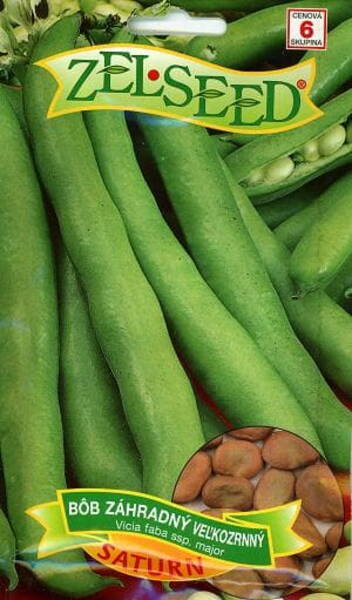A mid late coarse-fibred variety with usage of ripe und unripe seeds and with delicious taste.
Seeds have high nutritional value and contain a higher number of albumins. Unripe seeds are also suitable for freezing.
* Weight of 1000 seeds = 1500 g.
* Number of seeds in 1 g = 1-3.

Agricultural technology.
Broad beans grow well in loamy, clayey, slightly acidic soils with sufficient moisture.
The best predecessors of beans are cabbage, potatoes, pumpkin and various root vegetables.
The soil for the beans is dug up in the fall using a spade. Humus and mineral fertilizers are added. Before sowing, the seeds are soaked in water for 2-4 hours.
Then the seeds are sown in moist soil to a depth of 6-8 cm in a tape method with a distance between tapes of 50-60 cm and between rows in a tape - 25-30 cm.
The distance between plants in a row is 3-5 cm.
Further care of the plants consists of loosening, regular fertilizing, light hilling and watering in dry weather.
At the beginning of mass flowering, the tops of the shoots are cut off. This promotes uniform ripening of beans and is a means of combating black bean aphids.
The beans are harvested in several stages: at the stage of milky ripeness, the grains are harvested, and fully ripened beans are collected for winter consumption.
Green beans contain a lot of vitamin B, PP, and carotene (up to 2.5%).
Resistance: cold resistant.
Use: for home cooking and canning.












